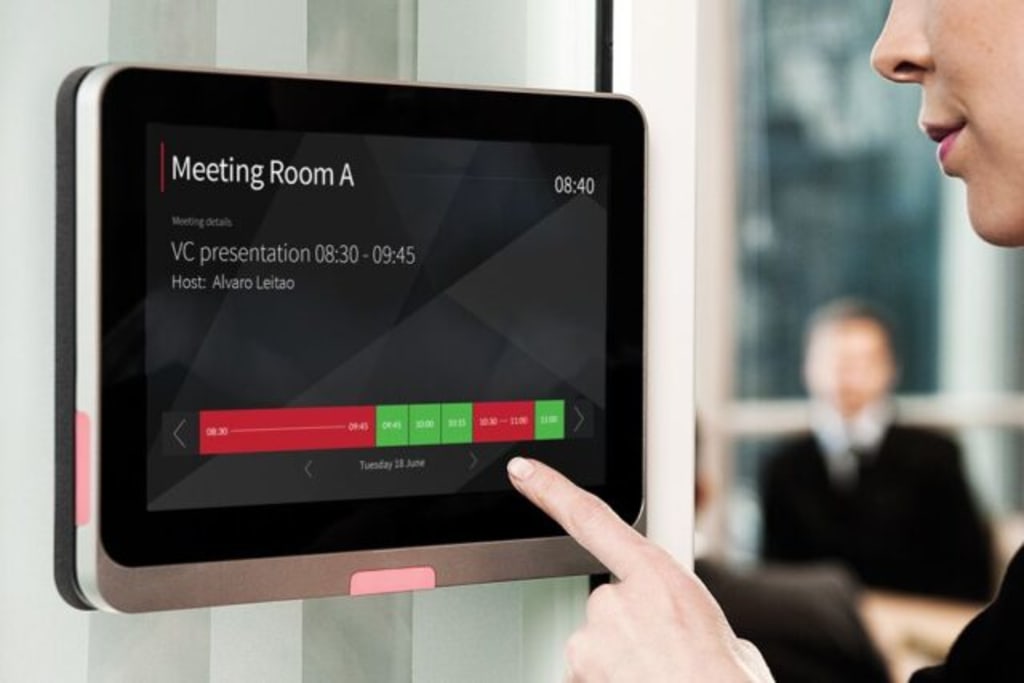Best Practices for Implementing Meeting Room Booking Software in Your Organization
Streamlining Meeting Room Management and Enhancing Collaboration Efficiency

Introduction
Meeting room booking software has become an essential tool for organizations of all sizes to efficiently manage their meeting spaces. By implementing robust meeting room booking software, businesses can streamline their scheduling processes, enhance productivity, and maximize the utilization of their meeting rooms. However, successful implementation requires careful planning and adherence to best practices. In this article, we will outline a detailed set of best practices to help organizations implement meeting room booking software effectively.
Assess your organization's needs
Before selecting a meeting room booking software, evaluate your organization's specific requirements. Consider factors such as the number of meeting rooms, the size of your workforce, the frequency and nature of meetings, and any unique scheduling constraints. This analysis will help you choose a software solution that aligns with your needs and can scale as your organization grows.
Research available options
Conduct thorough research to identify meeting room booking software solutions that suit your organization's requirements. Compare features, pricing, scalability, and integration capabilities. Consider solutions that offer mobile access, user-friendly interfaces, real-time updates, and integration with other collaboration tools (e.g., calendars, communication platforms).
Involve key stakeholders
Engage key stakeholders from various departments, such as facilities management, IT, and HR, in the decision-making process. Their input and feedback will ensure that the chosen meeting room booking software meets the needs of different teams and aligns with existing processes.
Plan for data migration
If you are transitioning from a manual or legacy system, plan for smooth data migration to the new software. Ensure that all relevant data, such as room availability, booking history, and user profiles, is accurately transferred to the new system. Consider engaging the vendor's support or IT professionals to assist with the migration process.
Customize the software to your organization's needs
Tailor the meeting room booking software to reflect your organization's unique requirements. Configure settings for room capacities, booking durations, recurring meetings, and any specific rules or policies governing room reservations. Customization ensures the software aligns with your organization's workflows and enhances user adoption.
Train employees
Provide comprehensive training to employees on how to use the meeting room booking software effectively. Offer both initial training sessions and ongoing support to address any questions or issues that may arise. Encourage employees to explore all the features and benefits of the software, ensuring that they understand its value in optimizing their meeting room experiences.
Promote adoption and communication
Encourage widespread adoption of the meeting room booking software by promoting its benefits across the organization. Emphasize how the software simplifies the booking process, reduces conflicts, and enhances collaboration. Communicate the importance of adhering to the new system to ensure accurate and up-to-date room availability information.
Establish policies and guidelines
Define clear policies and guidelines for meeting room bookings to prevent conflicts and ensure fair and efficient utilization. Set rules regarding booking lead times, cancellation procedures, no-show penalties, and prioritization for high-demand rooms. Communicate these policies effectively to all employees to foster a culture of responsibility and accountability.
Regularly review and optimize
Regularly review the performance of the meeting room booking software to identify any pain points or areas for improvement. Gather feedback from users and address their suggestions. Analyze usage data to identify patterns, optimize room allocation, and streamline the booking process further.
FAQs
Q1. Can meeting room booking software integrate with existing calendar systems?
A1. Yes, most meeting room booking software solutions offer integration with popular calendar systems such as Google Calendar, Microsoft Outlook, and iCal. This integration ensures that meeting room bookings are synchronized with users' existing calendars, preventing scheduling conflicts.
Q2. Can the software accommodate different time zones?
A2. Yes, modern meeting room booking software typically supports multiple time zones. This feature is especially useful for organizations with teams spread across different geographical locations, allowing seamless coordination of meetings across time zones.
Q3. How can I prevent unauthorized access or misuse of meeting room bookings?
A3. Meeting room booking software often includes features like user authentication, access controls, and booking permissions. By configuring appropriate security settings and user roles, you can prevent unauthorized access and ensure that only authorized personnel can book and manage meeting rooms.
Q4. What happens if a meeting runs overtime or finishes early?
A4. Meeting room booking software usually provides options for extending or shortening meeting durations, as well as allowing users to release the room if the meeting concludes earlier than scheduled. These features enable flexibility in adapting to changing meeting timelines.
Q5. Can I generate reports and analytics from the meeting room booking software?
A5. Yes, many meeting room booking software solutions offer reporting and analytics capabilities. You can generate reports on room utilization, booking trends, no-show rates, and other relevant metrics. These insights can help optimize room allocation and identify opportunities for process improvement.
Conclusion
Implementing meeting room booking software is a strategic step toward efficient meeting room management within organizations. By following the best practices outlined in this article, organizations can ensure a smooth and successful implementation process. Proper assessment of needs, research, stakeholder involvement, customization, training, and clear policies will maximize the benefits of the software and improve overall productivity and collaboration within the organization.
About the Creator
Enjoyed the story? Support the Creator.
Subscribe for free to receive all their stories in your feed. You could also pledge your support or give them a one-off tip, letting them know you appreciate their work.





Comments
There are no comments for this story
Be the first to respond and start the conversation.